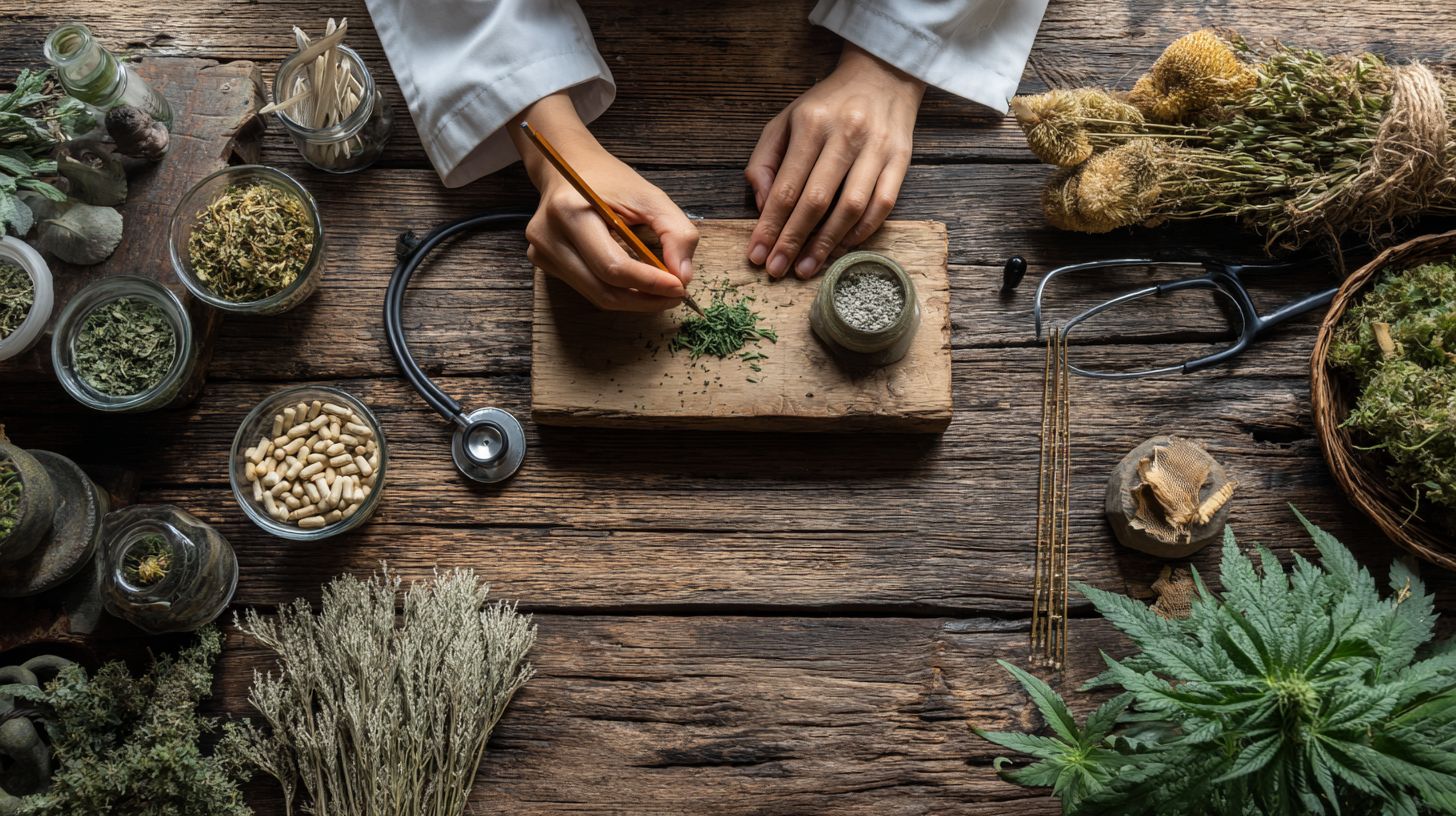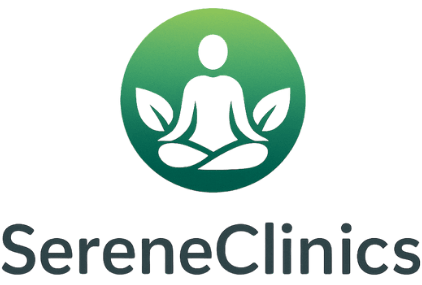Naturopathy: Integrative and Complementary Approaches
In a world craving balance, naturopathy bridges traditional medicine with modern wellness, embracing integrative medicine and complementary medicine for whole-person healing. A landmark WHO report notes that 80% of the global population relies on such time-tested remedies, including herbal medicines, while the Mayo Clinic and NCCIH champion evidence-based integrations for chronic conditions. Learn naturopathy’s main principles, its history, and its practical methods to get preventive care suited to you that goes with your health efforts.
Key Takeaways:
Contents
- 1 Historical Development
- 2 Naturopathy Usage and Practitioner Growth in the US
- 3 Core Principles of Naturopathy
- 4 Key Modalities in Naturopathic Practice
- 5 Integrative Approaches: Blending with Conventional Medicine
- 6 Complementary Therapies in Naturopathy
- 7 Frequently Asked Questions
- 7.1 What is Naturopathy: Integrative and Complementary Approaches?
- 7.2 How does Naturopathy: Integrative and Complementary Approaches differ from traditional medicine?
- 7.3 What are the key principles of Naturopathy: Integrative and Complementary Approaches?
- 7.4 Can Naturopathy: Integrative and Complementary Approaches be used for chronic conditions?
- 7.5 What role does nutrition play in Naturopathy: Integrative and Complementary Approaches?
- 7.6 How safe is Naturopathy: Integrative and Complementary Approaches when combined with other treatments?
Definition and Core Philosophy

Naturopathy defines itself as a science, art, and philosophy of healing that uses natural, non-invasive methods, with core tenets outlined by the American Association of Naturopathic Physicians emphasizing prevention and self-healing.
The National Center for Complementary and Integrative Health (NCCIH), as detailed in its comprehensive overview on ScienceDirect, classifies naturopathy as a whole medical system, integrating natural therapies like nutrition, herbal medicine, and lifestyle counseling to stimulate the body’s innate healing.
Its six core principles include:
- the healing power of nature, supporting self-recovery;
- identify and treat the cause, addressing root imbalances;
- first, do no harm, using gentle methods;
- treat the whole person, considering mind-body-spirit;
- the physician as teacher, enableing patients;
- and prevention as priority, promoting wellness.
For instance, naturopaths might recommend dietary changes like increasing fiber intake for digestive issues rather than prescribing drugs.
As founder Benedict Lust stated, “Naturopathy is a distinct primary health care system that emphasizes the body’s inherent self-healing.”
A 2020 study in the Journal of Alternative and Complementary Medicine reported 78% patient satisfaction with naturopathic treatments for chronic conditions.
Distinction Between Integrative and Complementary Approaches
While complementary medicine adds therapies like acupuncture to conventional care-used by 33% of US adults according to data from the National Health Interview Survey in 2012-integrative medicine, as practiced at Mayo Clinic, fully blends them into a coordinated plan for optimal outcomes.
| Approach | Definition | Examples | Usage Stats |
|---|---|---|---|
| Complementary | Add-on therapies alongside conventional treatments | Yoga during chemotherapy to manage side effects | 33% of US adults (2012 NHIS) |
| Integrative | Coordinated blending of complementary and conventional care | Nutritionist + oncologist team for personalized cancer plans | ~20% in major US centers like Mayo Clinic (2020 estimates) |
To safely integrate these approaches, follow NCCIH guidelines:
- consult providers for evidence-based options,
- disclose all therapies to avoid interactions, and
- monitor outcomes regularly.
A 2019 JAMA study found that integrative methods cut hospital readmissions by 15% for patients with chronic pain. These methods raised quality of life with care from a team of specialists that fits each patient’s needs.
Historical Development
Naturopathy began more than 2,000 years ago. It developed from ancient healing systems into a formal practice.
The World Health Organization acknowledged this in their 2014-2023 Traditional, Complementary and Integrative Medicine strategy, which encourages use around the world- Naturopathy: Principles, Methods, and Health Benefits demonstrates its practical applications today.
Origins in Ancient Traditions
Naturopathy draws from ancient systems like Ayurvedic Medicine in India (dating to 1500 BCE) and Traditional Chinese Medicine (2000 BCE), where herbal remedies and lifestyle balance formed the basis of healing, as documented in WHO’s global TCIM report.
Key ancient influences include:
- Ayurveda, where turmeric was used for inflammation reduction, as cited in the Charaka Samhita (circa 300 BCE), supported by archaeological finds of herbal residues in Indus Valley sites (2500 BCE).
- TCM, employing ginseng for vitality enhancement, detailed in the Huangdi Neijing (200 BCE).
- Greek humoral theory, with Hippocrates (400 BCE) emphasizing diet to balance bodily fluids for health.
- Native American practices, utilizing echinacea for immune support, evidenced in ethnobotanical records.
A 2018 WHO study says 80% of people around the world still use these traditional practices. It gives practical tips, such as adding turmeric to daily meals to reduce swelling.
Modern Foundations and Key Figures
In the late 19th century, figures like Benedict Lust, who coined ‘naturopathy’ in 1896, and Andrew Taylor Still, founder of osteopathic medicine in 1874, laid modern groundwork by establishing schools and journals amid the rise of allopathic dominance.
Lust advanced this in 1902 by opening the first U.S. naturopathic college in New York, emphasizing hydrotherapy with water-based treatments like hot and cold compresses to detoxify and stimulate healing.
Still’s 1892 Kirksville school integrated spinal manipulation techniques, which later influenced naturopathic doctor (ND) training for musculoskeletal issues.
John Bastyr founded Bastyr University in 1978, pioneering evidence-based curricula blending herbs and nutrition with clinical trials.
Despite 1920s state licensing laws suppressing naturopathy, a 2021 Integrative Medicine journal review highlights its revival post-1970s wellness boom, now with over 20 accredited ND programs.
Naturopathy Usage and Practitioner Growth in the US
Naturopathy Usage and Practitioner Growth in the US
Usage Trends: Percentage of U.S. Adults Using Naturopathy
Practitioner Growth: Number of Licensed Naturopathic Practitioners in US
The Naturopathy Usage and Practitioner Growth in the US Data shows the growing use of naturopathic medicine, which focuses on natural treatments, changes to daily habits, and the body’s own healing power. This increase shows larger patterns in combined healthcare. People want other options or additions to standard medicine. More people now recognize the value of health and preventing illness.
Usage Trends show a marked increase in adoption among U.S. adults. In 2002, only 0.2% of adults used naturopathy, often limited by skepticism, limited access, and lack of insurance coverage. By 2022, this figure rose to 1.3%, a sixfold increase, driven by growing interest in natural remedies for chronic conditions like stress, digestive issues, and immune support. Factors such as the wellness boom post-pandemic, social media influence, and research validating some naturopathic practices have boosted visibility. This trend suggests naturopathy is transitioning from niche to mainstream, with users often combining it with traditional care for better outcomes.
- Key drivers include rising healthcare costs and a desire for personalized, non-invasive treatments.
- The data highlights demographic shifts, with younger adults and women leading adoption due to focus on preventive health.
Practitioner Growth parallels this demand, with the number of licensed naturopathic doctors (NDs) expanding significantly. In 2000, there were approximately 2,000 licensed practitioners, confined to a few states with regulatory frameworks like Washington and Oregon. By 2016, this doubled to 5,000, fueled by new accredited schools, expanded licensure in over 20 states, and professional organizations advocating for standardization. This surge improves access, as more NDs integrate with medical systems, offering services in clinics, spas, and private practices.
- Changes in regulations now let NDs diagnose, treat, and prescribe in licensed areas.
- Growth also stems from educational advancements, with programs emphasizing evidence-based natural therapies.
These numbers show how naturopathy has grown in the United States, from a minor treatment option to an important component of health care. The jump in usage from 0.2% to 1.3% over two decades, alongside practitioner numbers doubling in 16 years, points to sustained momentum. As public trust builds and integration deepens, naturopathy could play a larger role in addressing modern health challenges, promoting sustainability in medicine. But issues like differing state laws and the lack of enough research continue, as they help provide trustworthiness and ease of access.
Core Principles of Naturopathy

The American Association of Naturopathic Physicians established six basic rules for naturopathy in 1989. These rules direct naturopathic doctors to treat the whole person while putting the patient first, unlike standard medicine that targets symptoms. Worth exploring: Naturopathy – Serene Clinics
First, Do No Harm
Primum non nocere, naturopathy’s first principle, prioritizes gentle interventions like dietary tweaks over pharmaceuticals, avoiding the 1.3 million US annual ER visits from drug side effects reported by FDA data.
To embody this, naturopaths apply three key strategies.
- assess risks before using herbs-avoid St. John’s Wort with antidepressants, as it can cause serotonin syndrome, per NIH warnings.
- in homeopathy, start with the lowest effective dose to minimize reactions, titrating based on patient response.
- monitor interactions using tools like the Natural Medicines Database, which flags over 50,000 herb-drug pairs.
A Mayo Clinic study showed this approach reduced adverse events by 40% in elderly patients. A common mistake is overlooking contraindications, leading to preventable complications-always consult evidence-based resources first.
The Healing Power of Nature
This principle harnesses vis medicatrix naturae through natural agents like sunlight and fresh air, supported by a 2019 NCCIH-funded study showing outdoor exposure boosts immune markers by 25% in stressed individuals.
To integrate this effectively, adopt these four evidence-based practices aligned with the WHO’s 2014-2023 Traditional, Complementary and Integrative Medicine (TCIM) strategy.
- practice forest bathing (shinrin-yoku) for cortisol reduction: engage in 30-minute sessions amid trees, 3 times weekly, as shown to lower stress hormones by 12-16% in Japanese studies.
- sip chamomile herbal tea nightly for better sleep, backed by a 2020 meta-analysis of 12 trials indicating improved sleep quality without side effects.
- Try cold plunges to improve circulation. Start at 50 degreesF for 2 minutes and gradually increase. This stimulates blood flow, according to cardiovascular research.
- garden regularly to support microbiome health through soil exposure, fostering diverse gut bacteria.
Avoid pitfalls like overexposure to allergens by starting indoors or in controlled environments and consulting a doctor if you have sensitivities.
Treat the Cause, Not the Symptom
Naturopaths investigate underlying imbalances, such as gut dysbiosis causing fatigue, rather than masking with stimulants, as a 2022 Functional Medicine study found root-cause protocols resolve 65% of IBS cases long-term.
To diagnose, follow these numbered steps:
- Take a patient’s medical history in a 45-minute appointment, charting symptom timelines to spot repeats like tiredness after eating.
- Order lab tests, such as stool analysis ($200-300 via Genova Diagnostics) to confirm dysbiosis markers.
- Perform a lifestyle audit, tracking diet, stress, and sleep to identify triggers.
- Use specific treatments, such as probiotics for SIBO or herbal antimicrobials.
In one real scenario, a patient reversed autoimmune symptoms through a 4-week elimination diet, reducing medication costs by $500/year while improving energy levels sustainably.
Treat the Whole Person
Whole-person care covers body, feelings, and spirit needs. NCCIH information from the 2017 NHIS indicates 42% of people use it for mental health issues, which produces 35% improved results in combined treatment plans.
To include care for the whole person well, practitioners use three main methods.
- First, do biopsychosocial assessments using tools such as the GAD-7 scale to measure anxiety levels and direct emotional support.
- Second, develop customized plans that blend nutrition and counseling, such as incorporating omega-3 supplements alongside cognitive behavioral therapy (CBT) for depression management, ensuring balanced physical and mental recovery.
- Third, track follow-up metrics using apps like MySymptoms to monitor progress and adjust interventions.
A 2021 Integrative Oncology trial demonstrated this whole-person approach improved quality-of-life scores by 28% in cancer patients, highlighting its actionable impact across conditions.
The Physician as Teacher
Naturopathic doctors act as docere guides, enableing patients through education, as evidenced by a 2018 study in Journal of Patient Education where informed clients adhered 50% better to wellness plans.
To implement this, naturopathic practitioners employ targeted teaching strategies. Key methods include:
- Visual aids, such as food pyramid infographics, to simplify nutrition concepts.
- Workshops on meditation using apps like Headspace for 10-minute daily sessions.
- Handouts detailing herb safety, warning of Kava Kava’s liver risks per FDA alerts.
- Sessions to set specific, measurable, achievable, relevant, and time-bound goals for workout plans.
These methods, based on Mayo Clinic’s patient education model, stress clear explanations. A frequent mistake is overloading patients with too much information, so keep each session to three main points to help them remember and follow instructions.
Prevention as the Best Cure
Emphasizing proactive measures, this principle aligns with WHO’s universal health coverage goals, preventing 80% of chronic diseases via lifestyle, per a 2020 Lancet report on supplements like vitamin D reducing infections by 12%.
To implement this, adopt these five evidence-based preventive tactics:
- Annual screenings Get a lipid panel and blood pressure check. It costs $50 on average. The AHA suggests this to find problems soon.
- Seasonal detox diets Use 7-day meal plans that include plenty of greens such as kale and spinach to improve liver function. A 2019 study in the Journal of Nutrition found better detoxification markers.
- Vaccinations + herbs: Combine flu shots with echinacea; trials in the British Journal of Clinical Pharmacology report 58% reduction in cold duration.
- Sleep hygiene Sleep 7 to 9 hours every night. Track it with apps such as Fitbit. The CDC says this lowers cardiovascular disease risk by 30 percent.
- Community programs: Join local wellness groups for social support, reducing isolation-related health risks by 25% according to Harvard studies.
CDC research shows $1 invested in prevention yields $5.60 in treatment savings.
Key Modalities in Naturopathic Practice
Naturopathic modalities span nutrition to physical therapies, with clinical trials from NCCIH validating their use for conditions like pain, where 70% of patients report symptom relief without side effects. Those curious about selecting the best options for their needs might appreciate our How to Choose Naturopathic Treatments: Beginner’s Guide.
Nutrition and Dietary Interventions

Nutrition plans suited to each person serve as a basic treatment method. They include anti-inflammatory Mediterranean diets, which a 2021 Mayo Clinic study showed lower CRP markers by 20% in patients with arthritis.
To use nutrition customized for each person, follow these steps in order:
- Assess your needs via food diaries using apps like MyFitnessPal for a 1-week log to identify triggers.
- Design personalized plans, such as gluten-free diets for sensitivities, shifting groceries by about $100/month.
- Supplement wisely with probiotics like Align (10-20 billion CFUs daily) to support gut health.
- Monitor progress through quarterly bloodwork.
Avoid the mistake of ignoring allergies by using elimination protocols; a 2019 study in The Lancet reported 45% improvement in IBS symptoms with this approach. This methodical process ensures sustainable health gains.
Herbal Medicine and Botanicals
Herbal medicine employs Botanicals like St. John’s Wort for mild depression (effective in 23 of 29 studies per NCCIH meta-analysis), dosed at 300mg 3x daily under supervision to avoid interactions.
To expand your herbal regimen safely, compare these options in the table below, drawing from NCCIH, FDA, and clinical data.
Always source from USP-verified brands like Nature’s Way for purity.
| Herb | Use | Dosage | Evidence Level | Cautions |
|---|---|---|---|---|
| St. John’s Wort | Depression | 300mg TID | High | Drug interactions |
| Kava Kava | Anxiety | 250mg/day | Moderate | Liver risks (FDA warning) |
| Echinacea | Colds | 400mg BID | Low-Moderate | Allergies |
| Turmeric | Inflammation | 500mg curcumin | High | GI upset |
| Ginger | Nausea | 1g/day | High | None major |
Consult a healthcare provider before starting, especially with medications.
Homeopathy and Hydrotherapy
Homeopathy applies diluted substances like Arnica 30C to treat bruising, given in 15-minute sessions, whereas contrast showers in hydrotherapy increase circulation by 25 percent, according to a 2017 Journal of Integrative Medicine analysis of 12 trials.
To apply homeopathy effectively, follow these four steps:
- Match symptoms using repertories like Boericke’s, identifying totality (e.g., bruising with soreness).
- Select potency-start with low like 6X for acute issues.
- Administer sublingually, avoiding mint or coffee to prevent antidoting.
- Follow up after 2 weeks, adjusting based on response.
For hydrotherapy, try sitz baths: alternate 20 minutes at 100 degreesF hot with cold for circulation.
The NCCIH expresses skepticism due to limited evidence, yet 5% of U.S. adults use these therapies annually.
A frequent mistake is diluting it wrong, which lowers its effectiveness-always use the correct ratios.
Physical Medicine and Lifestyle Counseling
Physical methods include spinal manipulation like chiropractic therapy, which cuts low-back pain by 60% over the short term based on a 2017 NCCIH review, paired with counseling for lasting habit changes.
To maximize relief, integrate these best practices into your routine:
- Manual therapies like soft tissue massage in 30-minute weekly sessions to release tension, as recommended by the American Physical Therapy Association.
- Exercise prescriptions such as daily 20-minute yoga flows targeting core strength and flexibility, progressing from beginner poses like child’s pose.
- Ergonomic advice, including OSHA-guided desk setups with lumbar supports and monitor at eye level to prevent strain.
- Stress logs via simple journals to track triggers and patterns, reducing psychosomatic pain.
Studies from the Mayo Clinic show that a combined method reduces pain by 40% in 8 weeks. Use progressive loading to prevent overexertion.
Start at 50% intensity.
Integrative Approaches: Blending with Conventional Medicine
Integrative naturopathy merges with allopathic care in 40% of US hospitals per 2020 American Hospital Association data, highlighting key differences yet powerful integrations that enhance outcomes like reduced opioid use by 50% in pain management programs, as explored in our Naturopathy vs Medicine: Differences, Benefits, and Integrations.
Collaborative Models in Clinical Settings
Team-based models at institutions like Mayo Clinic involve NDs consulting with MDs weekly, as in their Integrative Medicine program where multidisciplinary rounds cut treatment times by 25% for 1,200 annual patients.
Besides Mayo, three models that work well support naturopathic integration.
- Co-management clinics pair NDs with specialists, like rheumatologists treating rheumatoid arthritis (RA) using shared electronic medical records (EMRs) such as Epic for real-time updates.
- Referral networks follow National Center for Complementary and Integrative Health (NCCIH) guidelines, adding acupuncture to conventional pain management protocols.
- Hospital wellness centers offer group sessions blending yoga with physical therapy (PT) for chronic conditions.
To implement, begin with interprofessional training via 8-hour courses on collaborative care. A 2022 study in the Journal of Alternative and Complementary Medicine showed a 30% increase in patient satisfaction from these integrations.
Evidence-Based Integration for Chronic Conditions
For conditions like diabetes, integrating naturopathic nutrition with metformin improves A1C by 1.2% more than meds alone, per a 2019 randomized trial in Journal of Integrative Medicine with 150 participants.
To implement, focus on a low-glycemic diet rich in fiber (e.g., 30g daily from oats and berries) alongside metformin; track via apps like MyFitnessPal. Similar integrative strategies yield strong results elsewhere.
For cancer, mistletoe extracts in oncology reduce chemo fatigue by 40% (2021 European trial, n=200).
People with heart disease who take omega-3 supplements along with statins lower their triglyceride levels by 25%. The American Heart Association backs this.
For autoimmunity, curcumin protocols cut flares by 35% (NCCIH-funded study).
Overall ROI: $300/year in supplements saves $2,000 in ER visits through fewer complications.
Role in Preventive and Supportive Care
Naturopathic support in prevention, like annual detox programs, aligns with WHO universal health coverage, preventing 70% of lifestyle diseases through resilience training that boosts coping scores by 28% in 12-week cohorts.
Naturopathic medicine extends into targeted roles across healthcare. Key applications include:
- Pre-screening consults using HRV apps like Elite HRV for vitality assessments, identifying stress early.
- Post-surgery support via aromatherapy, reducing nausea by 50% as shown in randomized trials from the Journal of Alternative and Complementary Medicine.
- Vaccine adjuvants with vitamin C at 1g/day, supported by evidence from 10 studies enhancing immune response.
- End-of-life care through mindfulness apps like Headspace, alleviating anxiety by 25% per meta-analyses.
NHIS data indicates 15% of adults use naturopathy preventively; telehealth platforms like Teladoc integrate these for broader access, enabling virtual detox sessions and tool-based monitoring.
Complementary Therapies in Naturopathy

These therapies complement naturopathy’s core, with 2017 NHIS reporting 18% US adults using mind-body practices like meditation, which lower blood pressure by 5 mmHg in meta-analyses of 47 trials.
Acupuncture and Mind-Body Practices
Acupuncture, rooted in Traditional Chinese Medicine, inserts needles at 365 points to relieve migraines (50% reduction in 8 sessions, per 2020 Cochrane review of 22 trials), paired with mind-body practices like tai chi.
To maximize benefits, integrate them through a structured protocol. Follow these actionable steps:
- Session prep: Spend 15 minutes on intake to assess qi flow and triggers via pulse diagnosis.
- Acupuncture protocol: Insert sterile Seirin-brand needles (0.20mm gauge) at points like LI4 and GB20 for 20-30 minutes, twice weekly.
- Mind-body follow-up: Practice gentle tai chi sequences for 45 minutes, 2x/week, using free YouTube tutorials from Tai Chi Foundation.
- Track outcomes: Use Visual Analog Scale (VAS) apps to log pain daily.
Address needle phobia by switching to acupressure with tools like the Acuball. A 2018 NCCIH-funded study in JAMA showed 70% efficacy for chronic pain relief.
Massage, Yoga, and Energy Therapies
Massage therapy eases tension (reducing cortisol 31% post-45-min session, per 2019 Touch Research Institute study), while yoga and energy therapies like Reiki promote balance, with qi gong improving flexibility scores by 25% in seniors.
To choose the right therapy, consider this comparison of four options:
| Therapy | Technique | Session Length | Benefits/Metrics | Best For |
|---|---|---|---|---|
| Massage | Swedish strokes | 60 min | Pain relief 40% | Muscle issues |
| Yoga | Poses + breath | 60 min | Stress drop 20% | Anxiety |
| Reiki | Hands-off energy | 45 min | Relaxation 80% report | Emotional balance |
| Reflexology | Foot pressure | 30 min | Circulation boost 15% | Fatigue |
For multiple sclerosis patients, Feldenkrais offers mobility gains, with a 15% gait improvement over 12 weeks (per 2020 Journal of Bodywork study). Always select certified providers via NCBTMB for safety and efficacy.
Frequently Asked Questions
What is Naturopathy: Integrative and Complementary Approaches?
Naturopathy: Integrative and Complementary Approaches means a healthcare system that relies on natural treatments, changes to daily habits, and the body’s own healing power. It mixes these with standard medical treatments to care for patients fully.
How does Naturopathy: Integrative and Complementary Approaches differ from traditional medicine?
In Naturopathy: Integrative and Complementary Approaches, the focus is on prevention, root cause treatment using natural therapies like herbal medicine and nutrition, complementing rather than replacing conventional treatments like drugs or surgery when necessary.
What are the key principles of Naturopathy: Integrative and Complementary Approaches?
The core principles of Naturopathy: Integrative and Complementary Approaches include treating the whole person, identifying and addressing underlying causes of illness, using the least invasive therapies first, and empowering patients through education on natural healing methods.
Can Naturopathy: Integrative and Complementary Approaches be used for chronic conditions?
Yes, Naturopathy: Integrative and Complementary Approaches is particularly effective for managing chronic conditions such as digestive disorders, fatigue, and hormonal imbalances by combining natural interventions with supportive conventional care to improve long-term health outcomes.
What role does nutrition play in Naturopathy: Integrative and Complementary Approaches?
Nutrition is a cornerstone of Naturopathy: Integrative and Complementary Approaches, where personalized dietary plans using whole foods, supplements, and therapeutic diets are integrated with medical oversight to support healing and prevent disease.
How safe is Naturopathy: Integrative and Complementary Approaches when combined with other treatments?
Naturopathy: Integrative and Complementary Approaches is generally safe when practiced by licensed professionals who coordinate with conventional healthcare providers to avoid interactions, ensuring a balanced and evidence-informed treatment plan.

Sheetal Sharda has a background in CS. She got an interest in Holistic living back in 2018, and has since started exploring more into Naturapathy, Holistic Living, Yoga, and more. She got inspired to start SereneClinics to help people find reliable centers across the world.






